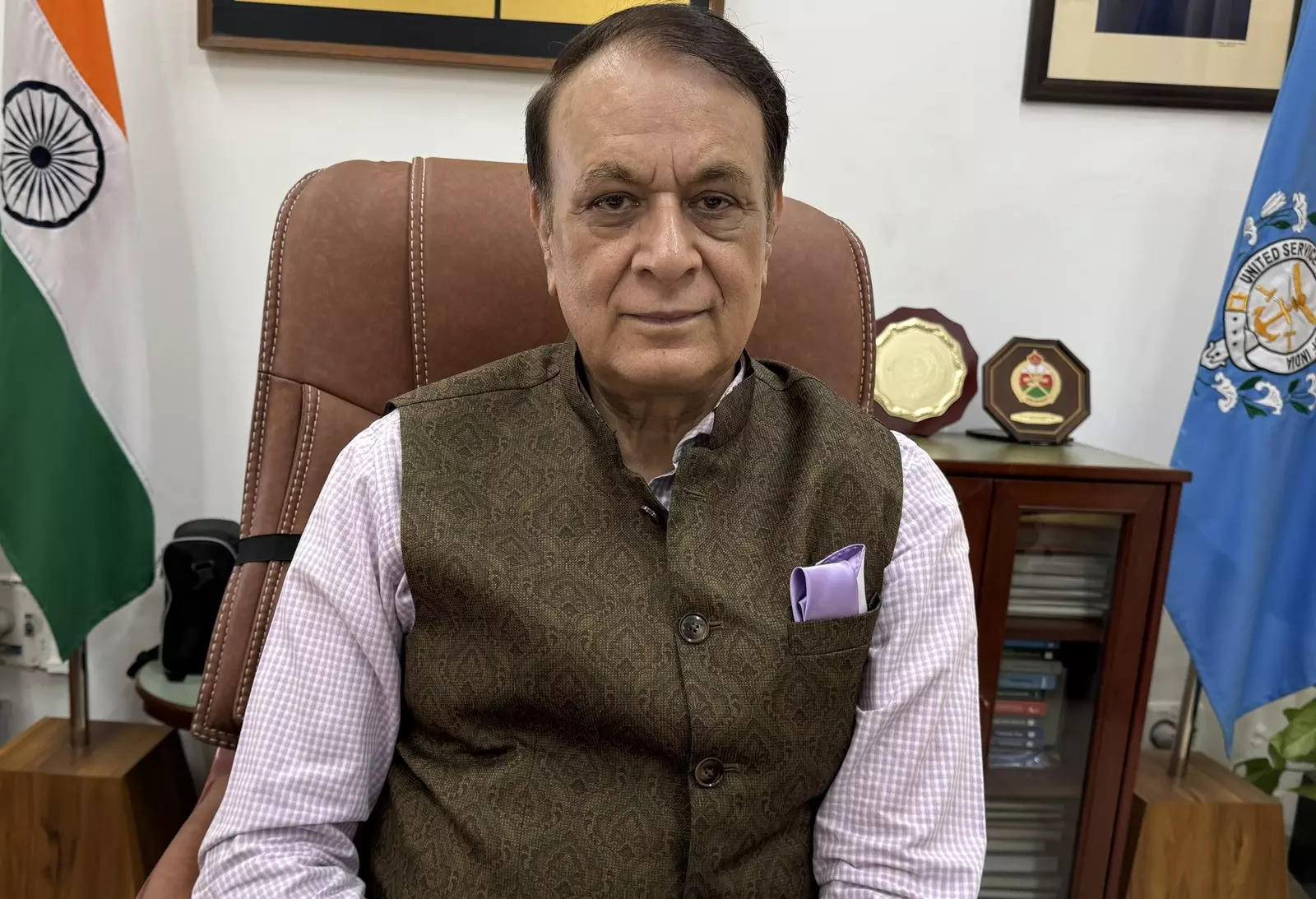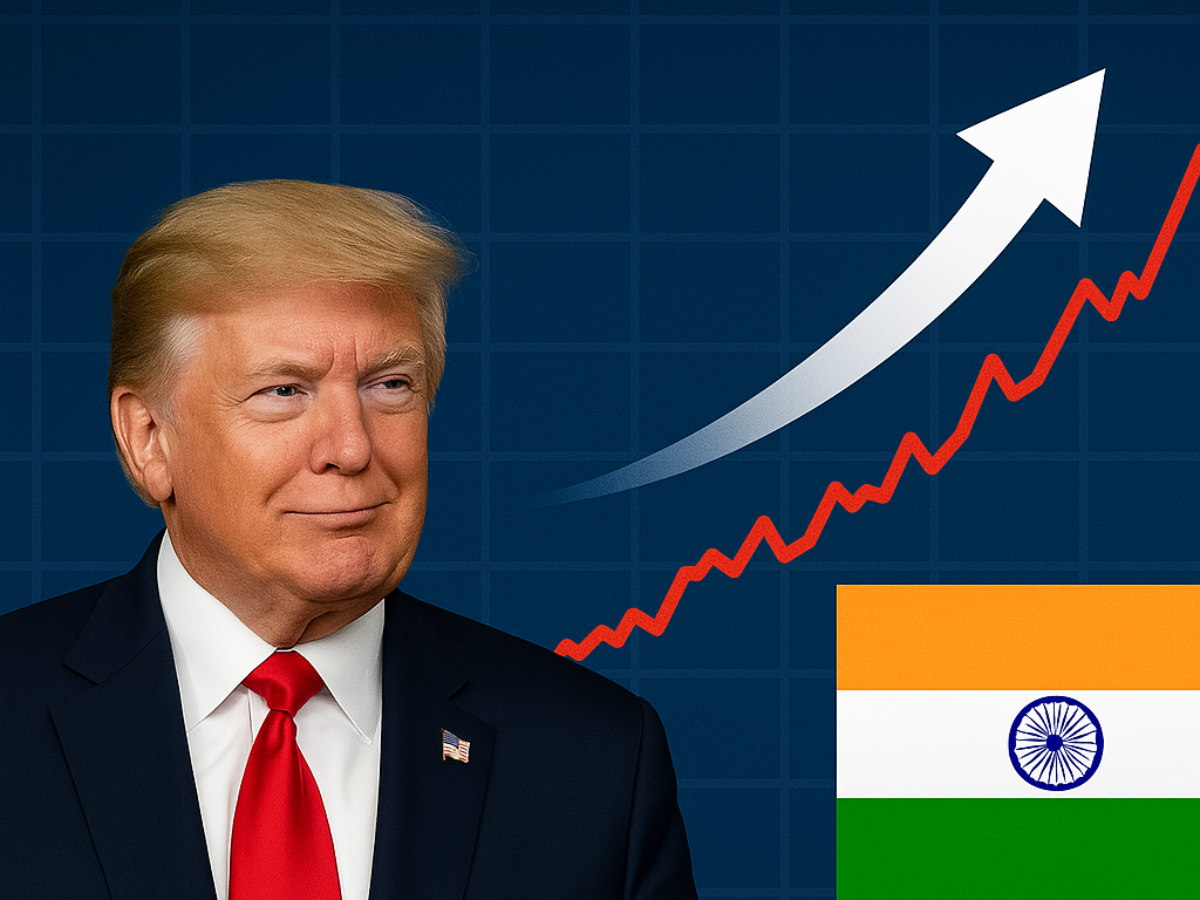- Defence
- 8 min read
America’s Retreat, China’s Rise, India’s Tightrope: As the global order unravels, what are India’s strategic choices
In this incisive interview, the Director General of the United Service Institution of India unpacks the global turbulence unleashed by Trump 2.0. From contested multipolarity to the collapse of multilateral institutions, he explores how these shifts redraw strategic frontiers. With sharp insights, he outlines the challenges and opportunities India must navigate in a world tilting toward fragmentation.
To understand these complex transitions, Anoop Verma, Editor-News, ETGovernment, spoke to Major General B. K. Sharma, Director General of the United Service Institution of India (USI), one of the country’s oldest and most respected national security policy research institutions. With deep expertise in national security, strategic affairs, and geopolitical risk assessment, Major General Sharma offers a comprehensive and candid evaluation of Trump 2.0’s implications for global stability, the future of international institutions, and its impact on India’s strategic security.
In this wide-ranging conversation, he unpacks the forces driving multi-domain contestation involving big powers —and outlines what India must do to navigate the treacherous waters of this emerging uncertain world order.
Edited Excerpts:
Trump 2.0 is characterised by disruptive policy shifts that challenge long-standing geopolitical norms. In your assessment, how will this approach reshape the global order?
Trump 2.0’s defining features—disruption, deal-making, decoupling, and deterrence—fundamentally alter the global strategic landscape. What we’re witnessing resembles a revival of Social Darwinism exhibited by nation-states, where national interest reigns supreme and global politics turns into a zero-sum game.
The result is an increasingly contested world order marked by ideological polarisation—between so-called liberal democracies, including Trump-led America with its assertive unilateralism on one side and authoritarian regimes on the other. This reminds us of Thucydides' Trap, where a rising power (China) threatens an established one ( USA), raising the risk of conflict.
The global scramble for geographic domination makes this phase even more dangerous—whether in the Indo-Pacific, the Arctic, the Panama Canal, or Greenland. Simultaneously, a fierce contest over resources—semiconductors, rare earth elements, data, and algorithms—leads to economic warfare, supply chain disruptions, and deepening protectionism. We are also witnessing a new arms race, now spilling over into cyberspace, outer space, and even the cognitive domain—where the mind becomes both a weapon and a target.
Most concerning, however, is that the United States—once the architect of the rules-based international order—is now dismantling it. Its retreat from key global institutions like the UN Human Rights Council, WTO, WHO and Paris Climate Accord marks a profound shift in global governance.
You mentioned strategic geography and resource control as core to Trump 2.0. Could you elaborate on how this might manifest?
We’re entering a phase of hyper-assertiveness over strategic locations. Trump has already floated controversial ideas similar to neo-imperialism —like greater U.S. control over the Panama Canal, incorporating Canada as the 51st state, and expressing interest in purchasing Greenland. These aren’t just symbolic—they reflect a deeper push for geostrategic dominance.
This also extends to contested maritime zones like the South China Sea, where domination translates to control over undersea resources, vital sea lanes and regional influence.
Then there’s the battle for resources. We're already deep into a “chip war,” with control over semiconductors, rare earth minerals, and emerging technologies becoming central to national security. Domination over data and algorithms will shape the next phase of geopolitical power.
How do you see these shifts' economic and military implications playing out under Trump’s leadership?

Most of the arms control treaties stand abrogated, atomic powers are enhancing and modernising their arsenal, and the rise of nuclear aspirational states is palpable. But the contest is broader now—multi-domain wars and the rise of proxies are playing out in grey zone environments. The cognitive domain is emerging as a new strategic frontier—where shaping public perception and psychological operations and deepfake become critical components of statecraft. Military application of AI, deployment of Lethal Autonomous Weapon Systems, and disruptive technologies radically alter the character of war.
Meanwhile, Trump’s domestic policy disruptions—targeting immigration, education, judicial frameworks, and the federal structure—are weakening the U.S. internally. This internal volatility and external aggression could erode America’s diplomatic and economic influence and heighten the risk of a global recession reminiscent of the 2008 crisis.
The U.S. was once the chief architect of the post-WWII world order. With its withdrawal from global institutions, what does the future hold for international organisations?
The institutions that once anchored global governance—the UN, WTO, WHO, and IMF—are now in retreat or dysfunction. Ironically, the very country that created this liberal international order is now dismantling it.
This erosion of multilateralism undermines global efforts to address collective challenges—from trade disputes to climate change to conflict resolution. The UN Security Council is often deadlocked, peacekeeping missions are winding down, and WTO arbitration is paralysed with disputes worth over $150 billion still pending.
This vacuum is being filled by alternative power centres and parallel institutions—many spearheaded by China—which threaten to fragment the global governance structure entirely.
What does the weakening of NATO and East Asian alliances mean for the global security architecture?
It’s profoundly destabilising. NATO, once the key balancer to rising Chinese and Russian assertiveness, is under immense strain. The U.S. currently funds nearly half of NATO’s budget. If that support is withdrawn or reduced, NATO could wither. Europe neither has the resources nor the time to create an effective European national security architecture.
In East Asia, Trump’s insistence that allies like Japan and South Korea pay more for their security has created unease. Likewise, its strategic ambiguity on Taiwan has compounded. If a confrontation arises with China—in the Taiwan Strait or the South China Sea—there’s no guarantee the U.S. will step in.
This has prompted hedging propensity in the East Asian states: Europe, too, may renew its energy imports from Russia and cosy up to China for commerce and trade. Ironically, Trump’s ‘America First doctrine may enable China to great again moment – potentially shifting the global balance in Beijing’s favour.
And what would this mean specifically for India’s strategic environment?
India will find itself under increased pressure. A weakened NATO emboldens China, which may intensify assertiveness along the Line of Actual Control (LAC). The South China Sea could become a “Chinese lake,” China might push territorial claims more aggressively, including in the East China Sea.
We may also see the emergence of regional spheres of influence—America retreating to Euro-Atlantic priorities, Russia doubling down on Eurasia, and China pushing for a Beijing-centric Asian order. None of these scenarios is favourable to India.
There is growing talk of a shift toward contested multipolarity and dysfunctional multilateralism. How do you interpret this transition?
The post-World War II order is unravelling, and we’re moving toward a fragmented multipolarity. New power centres are rising—militarily or economically- in technology and ideology. While Western blocs like NATO and the EU remain, they’re being challenged by China-led initiatives like the Belt and Road, Global Security Initiative, and new financial institutions.
Organisations like SCO and BRICS+ represent significant populations and landmass. Competing trade and transport corridors—such as IMEC, INSTC, and the Vladivostok–Chennai route—signal a reshaping of global supply chains.
Yet, this transition is marred by dysfunction. The UN Security Council is paralysed. Climate commitments are backsliding. More agile players like the New Development Bank and AIIB are outcompeting institutions like the IMF and World Bank. We are caught in an interregnum—the old order is dying, but the new one hasn’t been born. That’s a dangerous and unstable moment in history.
What are India's strategic ramifications in this fractured global environment?
India’s vision of becoming a $30 trillion economy by 2047 depends on a conducive global environment. We need stable foreign direct investment, reliable technology transfers, and robust exports. But all of these are under threat.
Our neighbourhood remains turbulent, with unstable regimes and persistent threats from the China-Pakistan axis. Energy security is a concern—two-thirds of our energy needs are sourced from volatile West Asia. Defence modernisation under Atmanirbhar Bharat hinges on foreign collaboration and MSME funding, which could suffer in this disorder.
Moreover, India’s leadership aspirations in the Global South depend on our ability to offer economic support — through loans, aid, or development initiatives. If our economy falters, we risk ceding influence to China and Russia. Without 8% plus economic growth, we miss development goals and weaken our defence and diplomatic capacity.
How do you see the U.S.-China rivalry unfolding under Trump’s return, and what does it mean for middle powers like India?
The U.S.-China rivalry will define the next phase of global geopolitics. There’s bipartisan consensus in Washington that China could overtake the U.S. by 2050—economically and technologically. Containment of China is now central to U.S. strategy.
Technological rivalry is fierce. The U.S. has curbed semiconductor exports, prompting China to pour over $100 billion into domestic chip manufacturing. Despite sanctions, China is nearing breakthroughs in advanced AI and 5-nanometer chip production. Trade tensions are intensifying—U.S.-China trade could shrink by $200 billion by 2026.
Militarily, the Indo-Pacific is the key battleground. The U.S. has earmarked $30 billion in Indo-Pacific defence funding, while China’s $310 billion budget prioritises naval expansion. If tensions over Taiwan escalate, a miscalculation could lead to a direct conflict—especially given the lack of conflict-resolution mechanisms and prevailing hyper-nationalism on both sides.
This is a precarious but strategic moment for middle powers like India. We must carefully balance our partnerships and avoid entanglement in significant power conflicts while advancing our interests on the global stage.




COMMENTS
All Comments
By commenting, you agree to the Prohibited Content Policy
PostBy commenting, you agree to the Prohibited Content Policy
PostFind this Comment Offensive?
Choose your reason below and click on the submit button. This will alert our moderators to take actions